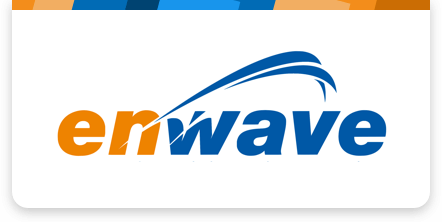Enwave and Toronto Water tap into innovative energy source

![]()
Opportunity
A revolutionary approach to cool Toronto’s downtown core
Visitors drawn to Toronto’s scenic waterfront might not realize that deep below the lake’s surface is the city’s most valuable source of renewable energy. Lauded by cities around the world, Enwave’s Deep Lake Water Cooling (DLWC) system harnesses the cold temperature at the bottom of Lake Ontario to cool hospitals, data centers, educational campuses, government buildings, commercial and residential buildings.
Enwave shares infrastructure with the City of Toronto’s water utility – an innovative partnership and a key part of TransformTO, its Climate Action Strategy, which aims to reduce greenhouse gas emissions by 30% by 2020. It's expected that 30% of the city's floor space will be connected to low-carbon heating and cooling by the year 2050.
Solution
Leveraging scale for resilience and reliability
As the largest system of its kind, DLWC connects multiple buildings on the same network of infrastructure to leverage economies of scale – a sustainable alternative to conventional air conditioning and easier for buildings to implement than complex retrofits.
Using intake pipes that extend deep into Lake Ontario, cold water is pumped to the Island Filtration Plant operated by Toronto Water. The cold water is treated for use as drinking water before it's conveyed to the John Street Pumping Station. There, large heat exchangers transfer thermal energy between two systems – the potable water for the city is minimally heated as water supplied to downtown buildings is chilled. After the chilled water has circulated through and cooled the buildings, Enwave recycles the heat, returning the warm water to the pumping station to repeat the process.
Connecting to the network can reduce water consumption and operating costs, provide more predictable energy costs, and improve building resilience. The environmental benefits also run deep; the system currently displaces 55 MW of energy a year from Toronto’s electricity grid – equivalent to powering eight hospitals.
Results
Powering growth in North America’s fastest-growing city
DLWC is a globally-recognized model that delivers clean, reliable and energy-efficient cooling and it’s part of Toronto’s downtown district which connects over 190 buildings. This has led to improved reliability, freed up leasable real estate and avoided capital costs that would have otherwise gone to traditional on-site heating and cooling equipment.
For Toronto, the model has been so successful that the City plans to develop more low-carbon thermal energy networks to support and attract new development. In 2019, Enwave announced a C$100 million system expansion with C$10 million in federal funding from the Ministry of Environment and Climate Change’s Low Carbon Economy Challenge. The investment will make the city more resilient.
Successes
A sustainable, low-carbon, energy-sharing system
Uses up to 80% less energy
Significantly reduces water consumption
"In the late 1990s and early 2000s, Enwave and the City of Toronto pioneered an energy solution that leveraged Lake Ontario as a sustainable resource. This novel initiative, providing both drinking water and building cooling capacity to residents, established Toronto as a global leader in innovation, setting the pace to fight climate change and build a more resilient city."
- Jim Baxter, Director, Environment & Energy Division, P.Eng., MBA, City of Toronto
"Steam Whistle Brewing demonstrates a strong commitment to sustainability. We chose Enwave because our beer and facility are cooled through sustainable technology and green energy initiatives which signify the company’s commitment to a sustainable future and helps support our brand story – one that we proudly share with the thousands of people that tour our brewery every year."
- Cameron Heaps, Co-Founder, Steam Whistle Brewing
By the numbers
Compared to a chiller, Deep Lake Water Cooling can reduce electricity use by ~80%
Over 90 buildings connected, with multiple expansions planned.
An estimated 220 million gallons (832 million liters) of water saved annually; equivalent to ~350 olympic size swimming pools
![]()
Start the conversation
Let’s talk about how we can make you more sustainable, reliable and efficient.


